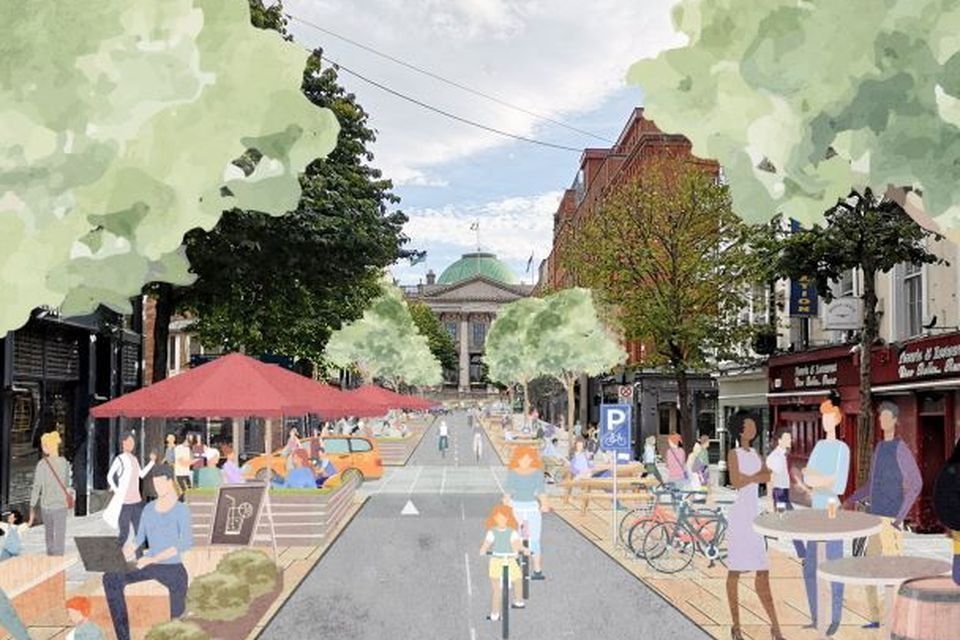
Introduction
Una Mullally’s opinion piece, “The wheels have come off the Irish commercial property market. No one is shouting stop” put words to the familiar sight throughout Dublin. Newly completed shiny boxes of offices unveiled in an economy which no longer needs them. This situation is not unique to the Dublin market with an upward trend of vacancy across the country.
The decisions made which has led to scarce urban land being used for expensive demonstrations of carelessness need to be examined and questioned. Land use requires a difficult juggling act of different and competing needs. In rural areas agriculture competes with biodiversity and ecosystem functioning, housing, transport and increasing with renewable energy infrastructure. In marine areas the fishing industry, communications and energy infrastructure including off shore wind turbines compete with the need to protect sensitive ecosystems which underpin much of marine ecosystem functioning. In urban settings this juggle is arguably more difficult as land is at a premium with much of it already claimed for specific uses. Offices, housing, parking, green and recreational space, retail and schools all vie for the same spaces with public, active and private transport also all competing with each other.
A balancing act
When thinking about this issue I came across an interesting project in USA called Pedestrian Dignity. It is a project which aims to get city planners as well as residents and visitors in an area to experience an urban environment outside of a car. Here, experience is the ultimate tool of learning. Mindfully moving under your own power alongside others who rely on wheelchairs, buggies, visual aids and canes and mobility aids focuses the mind on where we fail to prioritise the dignity of those outside cars and the most vulnerable when planning urban centres. This experiment could be replicated in many towns, villages and rural areas across Ireland. The experience of living on a busy rural road can result in residences being marooned with a car as their only bridge.
Extrapolating this idea – placing human dignity at the centre of all urban and rural planning would result in a very different environment. How we move around, where and how we work, how we are cared for and where we live all contribute to the dignity of a person. Focusing on one of these aspects and ignoring others does not work. Having a job but living in housing insecurity or living in an environment where the air is unhealthy to breath falls short in assuring human dignity for every member of our community.
Focusing on human dignity would result in more and better quality homes. It would prioritise people rather than space for cars in our urban settings. Parents with buggies and people in wheelchairs can move around as easily as an able bodied person with no caring responsibilities. It would ensure that there is sufficient safe good quality child care and education. At the very elementary level it would mean public toilets so people would not have to buy a coffee or pretend to shop in a shopping centre to use the facilities. It would mean a level of empathy and understanding that is currently difficult to incorporate in to planning decisions.
Dublin transport plan
The new Dublin Transport Plan while not perfect is an incredibly positive turning point in Dublin City planning. The changes that will be made by the end of the year will mean that cars will find it a little trickier getting through the city centre en route to a destination outside of the city core. These relatively small changes place greater importance on the people living in the city and those whose destination is the city centre, than on moving traffic. In the balancing act between space for heavy cars and space for people outside metal boxes more weight has finally been added to the pedestrian side.
This plan is not only about taking space from cars and giving more to pedestrians. Irelands transport system contributed nearly 20% of our greenhouse gas emissions in 2022, an increase of 6% above 2021. These emissions come hand in hand with air pollution which contribute significantly to respiratory disease and premature death. Creating a new urban environment which has better air quality, is less noisy, is a better home for those that live in and is better connected for those outside of cars will not be achieved solely thought this traffic plan. Much work needs to be done to balance the need for homes over offices, to balance the need for green spaces and biodiversity over parking spaces and paved areas, to balance the cost of living close to the city with the dire with sustainable accessibility from further afield.
While this balance will be difficult to find centring human dignity in the process could provide a useful guide in finding it.

